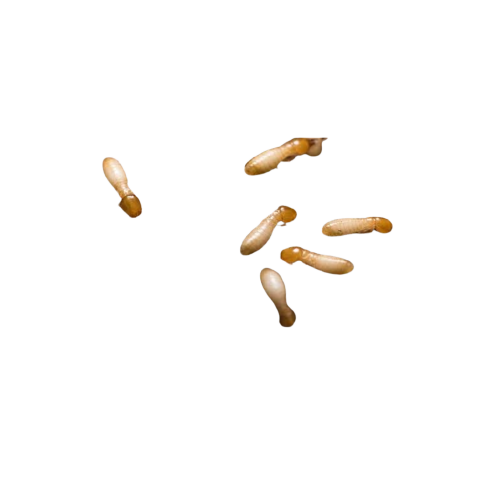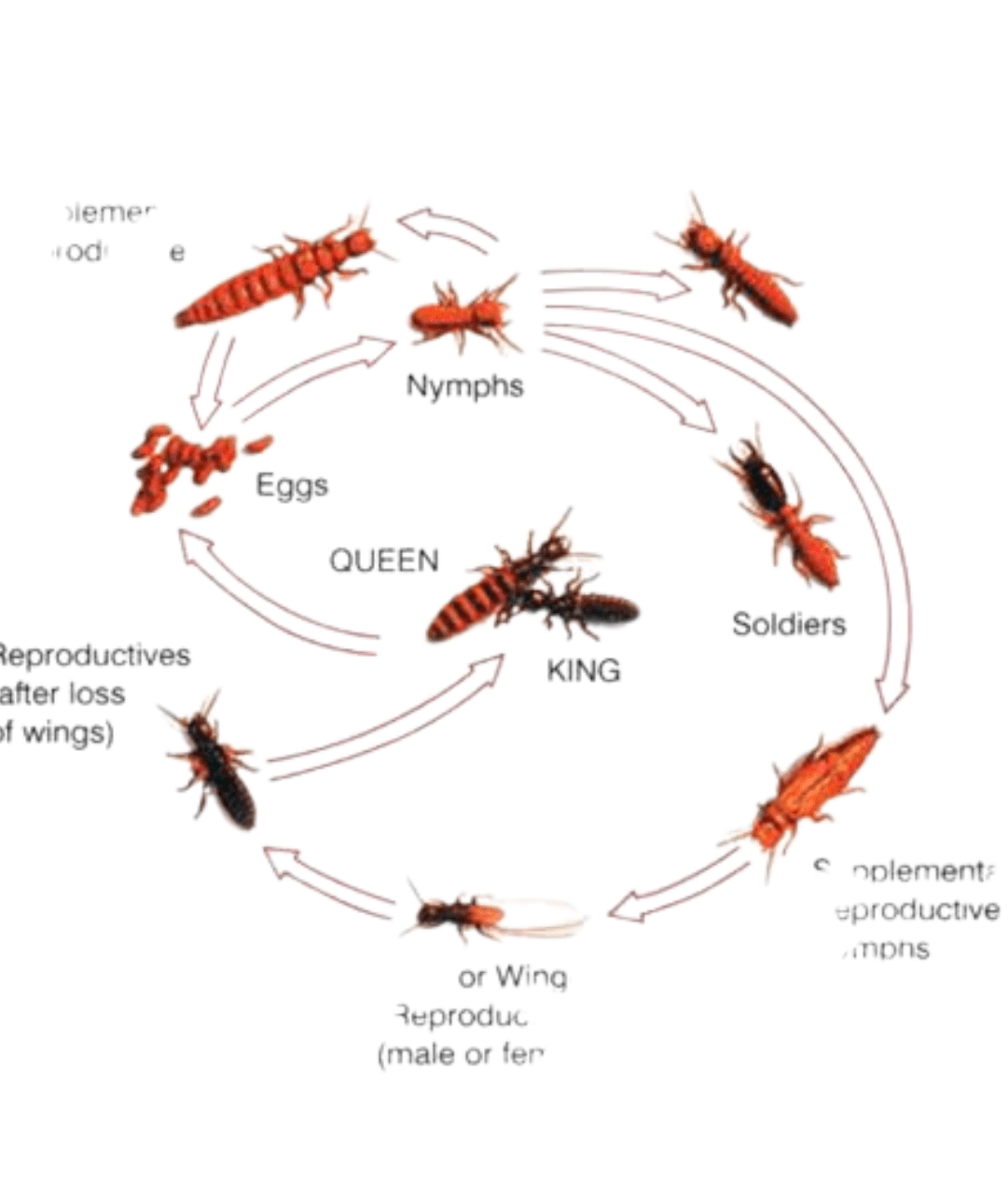How to manage Termites
Learn methods for identifying and managing termites to safeguard your home and business.

The fascinating world of Termites
Termites belong to the order Isoptera, showcasing complex characteristics that captivate both nature enthusiasts and scientists. Like ants, termites are well-known for their social behavior, living in highly organized colonies. They construct their colonies using a mixture of mud, soil, and saliva, communicating through chemical signals. Termites are often known as nature’s architects due to their exceptional tunnel-building skills.
It is believed that there are more than 2000 termite species worldwide, with the exception of Antarctica. Though ants and termites have similar appearances, termites can be identified by their straight antennae, broad waist, and equal-sized wings. Their sizes vary from millimeters to centimeters. Termite colonies are divided into three categories:
Workers, Soldiers, and Reproductives.
- Workers handle various tasks, including feeding other members, and they form the majority of the colony.
- Soldiers are responsible for defending the colony against invaders.
- Reproductives consist of kings and queens, whose primary responsibility is to ensure the colony’s survival through reproduction.

Life Cycle of Termites
The life journey begins with eggs, which hatch into tiny nymphs. These nymphs molt several times and eventually mature into one of three castes: workers, soldiers, or reproductive individuals, forming colonies. These colonies thrive by foraging, building nests, and maintaining their caste system, all of which ensure their survival and growth. The life journey of termites begins when the queen lays small, translucent eggs, which are then secured in a tunnel.
After a short period, the eggs hatch, transforming into nymphs. Worker termites take on the responsibility of providing proper care and nourishment for the nymphs during this stage. The nymphs undergo several molts, shedding their exoskeletons. After undergoing a series of molts, the nymphs finally develop into adults. At this point, they are ready to take on responsibilities within their colonies.
Overcoming Termite infestations
The world of termites is fascinating, but having these destructive pests invade our homes and businesses is unacceptable. Termite infestations are complicated and pose significant challenges when it comes to their elimination. DIY methods might offer temporary relief, but these resilient pests can bounce back, causing more harm in the long run. That’s where professional pest control services come to the rescue. If you are dealing with termite infestations in Dubai, Al Rasa Pest Control Services is your best choice to address the issue effectively. With years of experience, their team of experts understands the behavior of termites and adopts curated strategies to combat them effectively. Utilizing the latest and most advanced technologies, Al Rasa ensures comprehensive termite elimination, preventing future infestations.
Types of Termites
Depending on their appearance, behavior, and habitat, there are three different types of termites commonly found.
Subterranean Termites:
These pale-colored termites are about 1/8 to 1 inch long. They have soft bodies with straight antennae and live in underground colonies. Subterranean termites create tunnels using mud and rely on cellulose-rich materials like wood and decaying plants for survival.
Drywood Termites:
Compared to subterranean termites, drywood termites are smaller, around 1/4 to 3/8 inches in length, with reddish-brown bodies and straight antennae. They live inside the wood they infest and can cause damage to furniture and other wooden equipment. Drywood termites are commonly found in warm, dry regions.
Dampwood Termites:
Dampwood termites are the largest type, measuring about 1 inch in length, and have reddish-brown bodies. They are named “dampwood” because they prefer to live in moist wood,
Frequently Asked Questions
Termites are mainly attracted to food that contains cellulose, which is commonly found in wood, leaves, and grass. Their bodies contain enzymes that allow them to easily absorb nutrients from these sources.
Not all termites can fly. Among the three categories, early reproductive termites can fly, but this ability is temporary. After the reproductives mate, they shed their wings.
Some common signs of termite damage in wooden structures include mud tubes, hollow wood, maze-like patterns in damaged wood, and discarded wings.
While there are DIY methods to control termites, they are often temporary solutions. Termite infestations are complex, and permanent elimination usually requires someone with knowledge of treating them correctly.
The lifespan of termites varies depending on the species and caste. Worker termites only live for a few years, while the queen has a longer lifespan of more than a decade. Kings have a shorter lifespan of around a few years.
Some interesting facts and information about Termites
- Termites are hardworking insects that build colonies 24 hours a day.
- Termites are eusocial, meaning they have a caste system, and each caste has different duties.
- Some Queen termites can produce around 10 to 20 eggs per minute.
- It is said that the collective weight of all termites in the world is greater than the combined weight of all humans.
